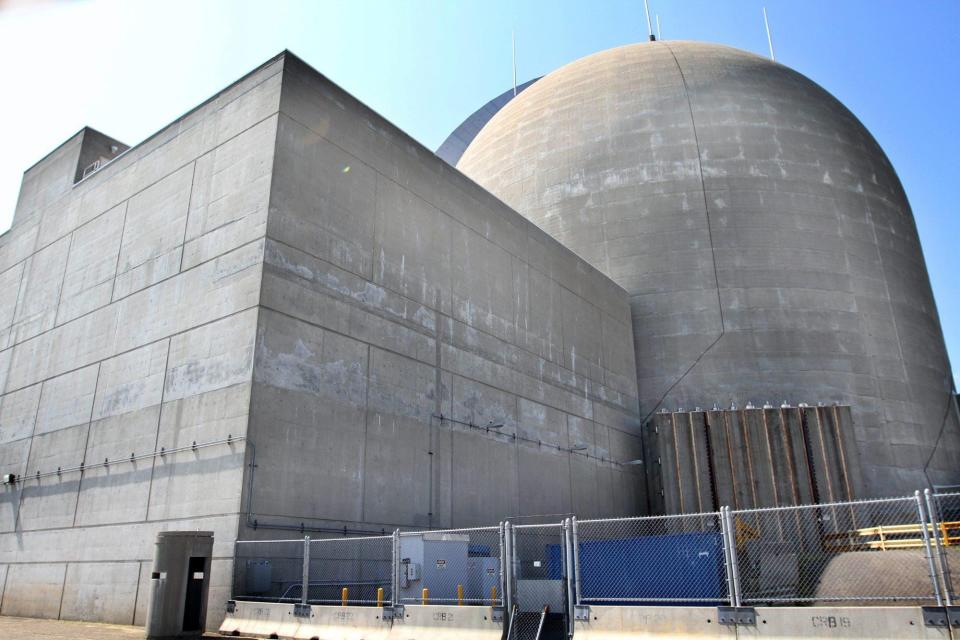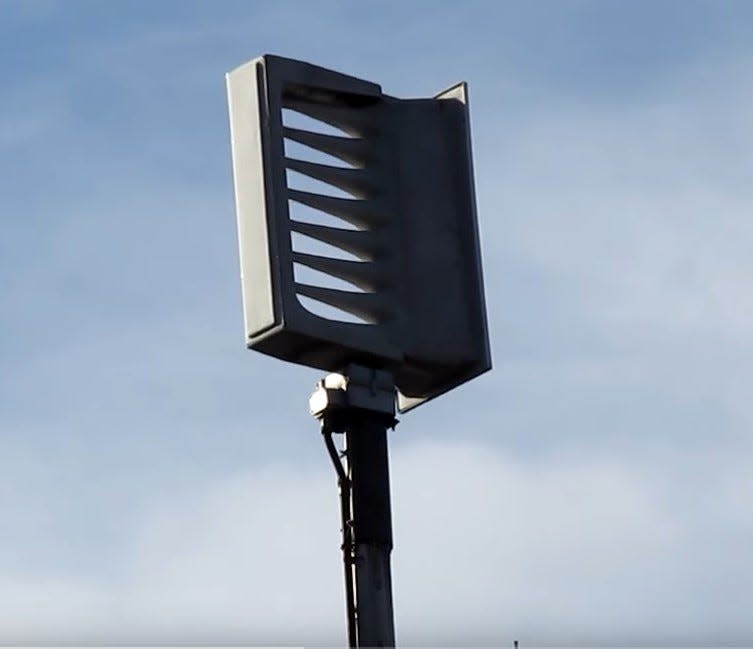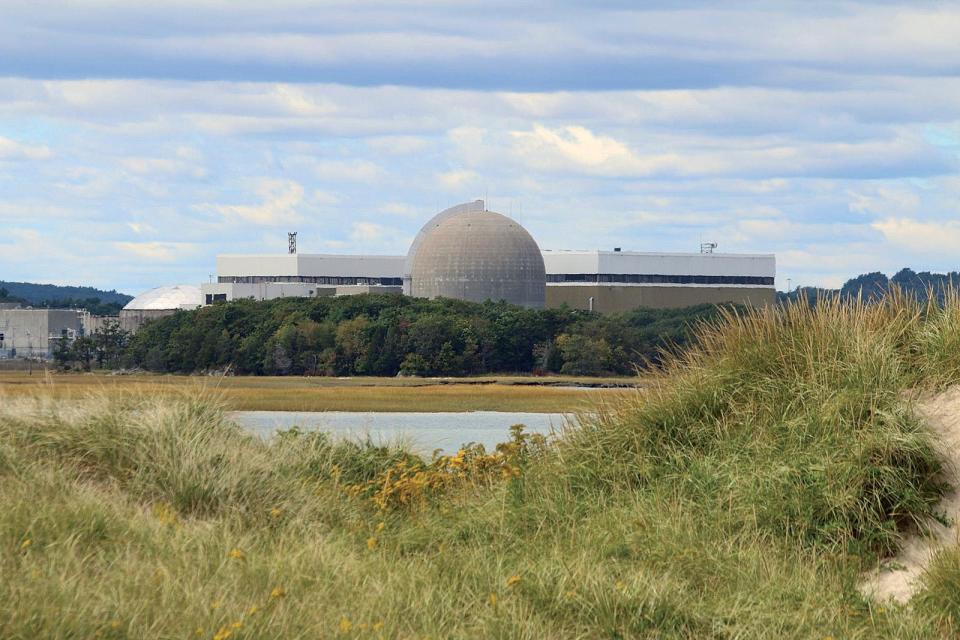No plan for a false alarm: Seabrook nuclear plant mishap exposes gap in NH protocols
SEABROOK — An unrealized omission in New Hampshire’s emergency management plan may have contributed to the extended time it took to alert the public on July 12 that sirens broadcasting an emergency at Seabrook’s nuclear power plant were a false alarm.
The current FEMA-approved version of the state’s emergency management plan for the nuclear power plant does not have a contingency for an inadvertent siren activation at Seabrook Station, according to Tyler Dumont, who is the public affairs officer for New Hampshire Commissioner of Public Safety Robert Quinn.
That may not be as surprising as it sounds. There had never before been a false alarm broadcast from Seabrook Station.
“We are currently in the process of creating a procedure for an inadvertent siren activation at Seabrook Station,” Dumont said.

Quinn, a Seabrook resident, recognized the seriousness the false alarm caused and the impact it had.
“Public safety is my highest priority,” Quinn said. “Our team is working diligently to conduct a review of this incident and identifying the shortcomings that contributed to this event.”
The gap in the state’s emergency plan for Seabrook Station may be only one wave of a perfect storm that hit July 12. At 10:51 a.m. on a hot summer day with tens of thousands people in the Seacoast area, an alert was broadcast saying something was wrong at Seabrook’s nuclear power plant, which is owned by NextEra Energy. The message told people to leave the area and turn on their radios.
Previous story: How human error at Seabrook nuke plant caused chaos. Councilor shares false alarm details.
The broadcast was a mistake, sent out over nine of 120 alarm sirens because a “siren technician” selected the wrong key at the plant during a required twice-monthly check of the system, according to a July 15 report from Executive Councilor Janet Stevens, R-Rye, after her two-hour meeting with NextEra executives at the plant and Seabrook’s town manager. The system then locked, she wrote, and the technician couldn’t stop the announcement in a siren/alarm system that’s 50 years old, something Stevens called “completely unacceptable.”
For a couple of hours until the truth became well known, confusion reigned. According to Seabrook Town Manager Bill Manzi, “people panicked,” labeling NextEra’s response on July 12 “insufficient.”
Local police and fire departments fielded hundreds of calls and frantic in-person inquiries, as traffic swelled while many beachgoers and residents did as they were instructed to do: leave the area.

Initially, officials and the media couldn’t get any answers. With people pouring off Hampton Beach, Hampton Deputy Police Chief Alex Reno said he had read on social media the alarm went off in error, but he couldn’t contact anyone to confirm it.
NextEra would eventually confirm the event of the “inadvertent” alarm activation. In its statement to the Seacoast Media Group at 12:10 p.m. on July 12, the multi-billion-dollar company offered its apology for the “inconvenience” its mistake caused the public.
NextEra spokesman Bill Orlove said the company is in the process of conducting a thorough investigation of the July 12 incident at its facility in Seabrook and will issue a report when it is complete.
However, plant officials did sit down with Stevens and Manzi and are speaking with the state’s emergency management office.
NextEra’s CEO John Ketchum also responded to a letter from U.S. Sen. Jeanne Shaheen, who had written him to express concern.
“While proactive communications were distributed within minutes of the incident, including those to state officials and the NRC, the timing of communications were not consistent across all our stakeholders and the public...,” he wrote to Shaheen. “You have my assurance that my team is taking the necessary measures to prevent this situation from happening in the future.”
Counterfeit parts found in nuke plants: Here is what NRC is doing about it
Federal nuclear industry watchdog responded quickly
Although many calls went unanswered and requests for information bottlenecked, some systems worked.
The Nuclear Regulatory Commission is the federal agency in charge of all nuclear facilities, with strict rules and protocols concerning public safety, plant operation and how problems are handled. The agency has two inspectors on-site at every nuclear facility. These men and women are boots on the ground, providing the agency’s eyes and ears at the nation’s nuclear complexes.

According to Dianne Screnci, senior public affairs officer in Region I of the NRC, NextEra power plant officials notified the NRC’s Seabrook resident inspectors “at about 11 a.m.,” nine minutes after the mistaken alarms were sounded. The resident inspectors quickly informed NRC headquarters, she said.
According to Screnci, the NRC also responded to inquiries from the public and media on July 12, informing them the alarms appeared “inadvertent.” It was confirmed at 11:34 that “there are no issues at the plant.”
However, according to NRC regulations, Screnci said, a nuclear power plant has four hours to officially notify the NRC of “an inadvertent activation.”
“It was reported at 1:22 (p.m.) by a call from the plant control room to the NRC Headquarters Operations Center, as required,” Screnci wrote. “Typically, those event reports are not required to be updated unless it is an evolving situation. They are posted on the NRC website each morning.”
According to the NRC website, NextEra’s notice read: “At 1051 EDT on July 12, 2022, Seabrook Station received report of inadvertent siren activation. Local authorities have been contacted to apprise them of inadvertent activation of sirens. No press release is planned at this time.”
The NRC’s involvement isn’t over.
“Our inspectors are in the process of reviewing NextEra’s actions to understand the cause of the event and actions to prevent recurrence,” Screnci wrote. “Should we have an inspection finding, we would assess its significance to determine the appropriate level of NRC oversight.”
More: Keeping watch at Seabrook nuclear power plant
New Hampshire’s safeguards
Although the NRC’s mission is to ensure nuclear facilities run safely, it doesn’t direct how local or state officials handle their emergency plans when problems like false alarms pop up.
“The emergency plans are developed by state and local officials,” Screnci wrote. “They are approved and evaluated by FEMA (the Federal Emergency Management Agency). Questions regarding the emergency plans should be directed to the appropriate (state) emergency management officials.”
According to Dumont, power plant officials reported the false alarm to the state’s Office of Homeland Security and Emergency Management (HSEM) at 11:10 a.m., 19 minutes after the broadcasts occurred. He said HSEM sent out its first press release on July 12 at 11:38 a.m., 28 minutes after notification from NextEra and 47 minutes after the erroneous broadcasts were sounded.
“As soon as we became aware of the siren activation, we took immediate action to confirm then notify our partners and the public that there was no threat or emergency at the plant,” according to HSEM Director Jennifer Harper in July 13 press release.
Column: Seabrook Station false alarm reveals useless emergency alert system
More notifications to the public followed via other communications vehicles, according to Harper, who added her department “utilized all available messaging mediums to spread the word as quickly as possible,” including text messages, NH Alerts, Wireless Emergency Alert system (along the coastline), social media and a press release.
Councilor Stevens received her text message at 11:47 a.m. That was 37 minutes after NextEra called HSEM, but almost an hour after the false alarm broadcasts.
And not everyone received the information as promptly as Stevens. For example, it took about an hour and a half for the alert to appear on some cell phones.
According to Dumont, the state’s office of emergency management hasn’t fallen down on the job. The state’s emergency plan for Seabrook Station is taken seriously. It’s reviewed and updated annually. It’s most recent evaluation was in April with a “FEMA graded exercise with more than 500 participants,” he said.
Unfortunately, during the creation of the plan that was done decades ago, no one thought to add protocol for procedures for false alarms at nuclear power plants.
Another issue debated by many is that the power plant’s alarm broadcast instructed people to leave the area and turn to their radios to get vital information. The question is: In 2022 how many people listen to or even have radios in this age of Internet news broadcasts, digital music and smartphones?
According to Dumont, this and all other aspects of last Tuesday's mistaken alarm and following responses will be addressed.
“We have been in communication with the plant and anticipate that the communications will be ongoing to ensure that this type of event will not occur again,” he said.
This article originally appeared on Portsmouth Herald: Seabrook nuclear plant mishap exposes gap in NH protocols

